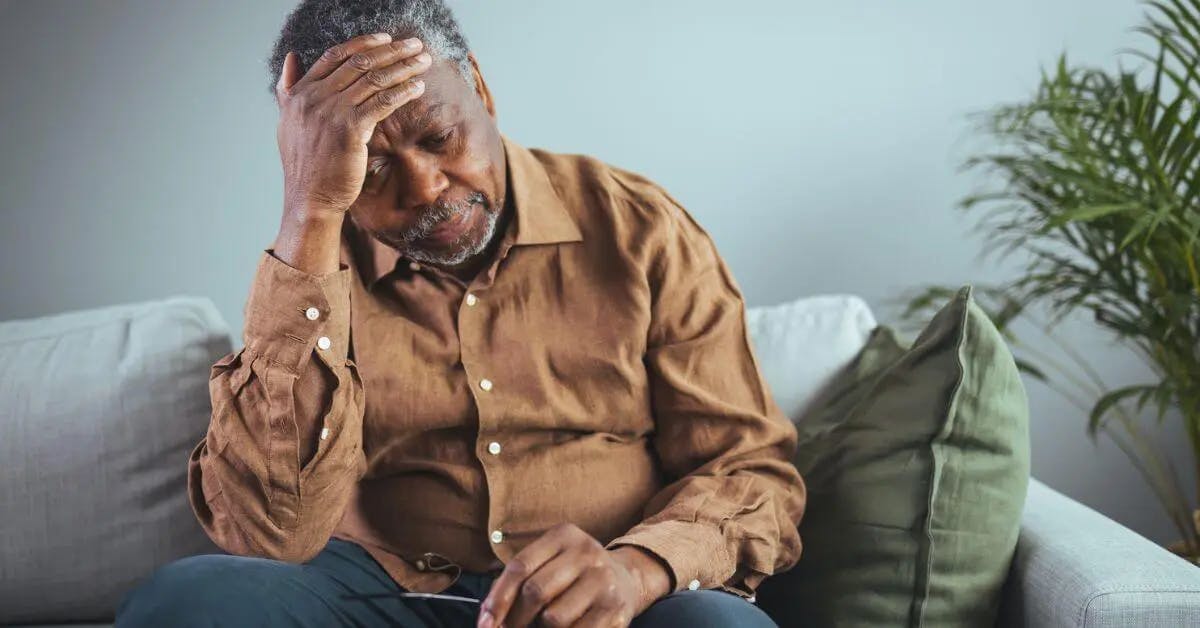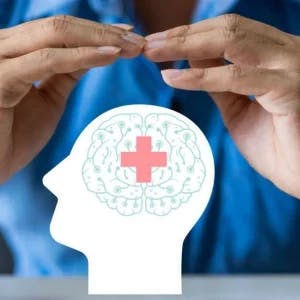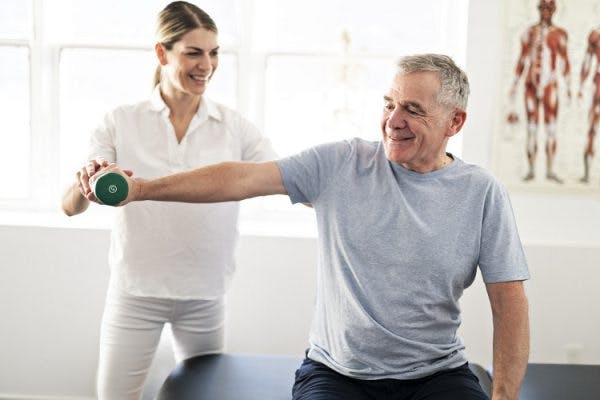The signs of decline after stroke can manifest in different ways. These can include affecting physical abilities, cognitive function, and even emotional well-being. Knowing these signs is crucial for intervention and ensuring the best possible outcome for yourself or a loved one.
This guide will help you understand what signs of decline you need to look out for following a stroke. Plus, we will also take a look at some of the different resources and support options for recovery.
Let’s dive in!
Understanding the Aftermath of a Stroke
Strokes affect everyone differently. Some individuals may experience mild, temporary effects, while others may face severe, long-term disabilities.
The extent of the impact of a stroke depends on a variety of factors including:
- Stroke type: Strokes are primarily categorized as ischemic (caused by a blood clot blocking an artery) or hemorrhagic (caused by a blood vessel rupturing and bleeding into the brain). Hemorrhagic strokes are generally more severe.
- Location and extent of brain damage: The specific brain regions affected and the severity of the damage influence the type and extent of resulting impairments. For example, damage to the left side of the brain often affects language and speech, while damage to the right side may impact spatial awareness and perception.
- Overall health and pre-existing conditions: Age, medical history, lifestyle factors (such as smoking, physical fitness and diet), and pre-existing conditions like diabetes or heart disease can influence stroke recovery and the likelihood of decline.
- Access to timely and effective treatment: The speed at which a stroke is diagnosed and treated significantly impacts the extent of brain damage. Early recognition and intervention with clot-busting medications or surgery, followed by comprehensive rehabilitation, is crucial for maximizing recovery and minimizing long-term effects.
While many individuals will experience improvements with time and dedicated rehabilitation, some may face a decline in their condition. While declining after stroke can be cause for concern, occasional minor setbacks are expected throughout the recovery process.
Let’s take a look at some of the signs of decline after stroke.
Physical Signs of Decline After Stroke
Physical decline after a stroke can manifest in various ways, impacting motor skills, sensory perception, and basic bodily functions. Here are some examples of physical signs of decline after stroke that you should be on the look out for.
1. Worsening Motor Skills
Worsening motor skills can be a sign of decline after stroke. Some of the most common issues may include:
- Increased weakness or paralysis: This might involve a decreased ability to move limbs, maintain balance, or coordinate movements. Individuals may experience difficulty walking, standing, or performing tasks that require fine motor control.
- Changes in gait: Changes in walking patterns, such as shuffling, unsteadiness, or frequent falls, can indicate a decline in motor control and balance. This can significantly increase the risk of injuries.
- Difficulty with fine motor skills: Tasks requiring precise movements, like buttoning clothes, writing, or using utensils, may become more challenging. This can affect an individual’s independence and ability to perform daily activities.
- Spasticity: Increased muscle stiffness and tightness can lead to pain, reduced range of motion, and difficulty with movement. Spasticity can also contribute to contractures, where muscles become permanently shortened. However, spasticity can also be a sign of recovery after stroke.
- Learned nonuse: When motor deficits result in difficulties using a limb for everyday activities, survivors may be tempted to avoid using that limb. For example, if a survivor has spasticity in their right hand, they may begin using only their left hand for daily tasks such as eating and brushing their teeth. Avoiding use of their affected right hand can cause any remaining function in that hand to deteriorate. To combat this, it is important to continue to try to use affected limbs, even if it is challenging.
You can utilize these full body stroke exercises to help improve worsening motor skills following a stroke.
2. Changes in Sensory Perception
Another common physical sign of decline after stroke may include changes in sensory perception such as:
- Vision problems: Stroke can affect vision in various ways, including blurred vision, double vision, loss of peripheral vision, or even complete blindness in one or both eyes.
- Numbness or tingling: Decreased sensation or altered sensations, such as numbness, tingling, or “pins and needles,” can occur in the areas affected by the stroke.
- Pain: Stroke survivors may experience persistent headaches, muscle aches, nerve pain (neuropathic pain), or pain related to spasticity.
- Difficulties with spatial awareness: Problems with judging distances, navigating surroundings, or perceiving the position of their body in space can make it challenging to move around safely and perform daily tasks.
Here, sensory reeducation can be an important piece of recovery for continued improvement.
3. Communication Challenges
Communication challenges can be frustrating following a stroke. Some common signs of decline after stroke may include:
- Worsening aphasia: Aphasia, a language disorder, can affect speaking, understanding language, reading, and writing. A decline in communication abilities can lead to frustration, social isolation, and difficulty expressing needs and wants.
- Dysarthria: Dysarthria refers to difficulty with speech articulation due to muscle weakness or coordination problems. This can result in slurred or mumbled speech, making it challenging for others to understand.
- Cognitive changes: Cognitive decline, including problems with memory, attention, and problem-solving, can further complicate communication and make it difficult to follow conversations or express thoughts clearly.
To improve your communication following a stroke, cognitive and speech therapy are key.
4. Swallowing Difficulties
Another sign of decline after stroke may include swallowing difficulties.
- Dysphagia: Dysphagia, or difficulty swallowing, can lead to choking, coughing, and aspiration (food or liquid entering the lungs). Aspiration can cause serious complications like pneumonia.
- Weight loss or malnutrition: Difficulties with eating and drinking can result in inadequate nutrition and weight loss, further compromising health and recovery.
- Dehydration: Swallowing problems can also lead to dehydration, which can cause fatigue, confusion, and other health issues.
Here are 10 Swallowing Exercises for Stroke Patients to Recover from Dysphagia that you can utilize during your recovery journey.
5. Fatigue and Reduced Energy Levels
One of the more frustrating signs of decline after stroke can be the fatigue and reduced energy levels. Some examples may include:
- Persistent tiredness and lack of motivation: Stroke survivors often experience persistent fatigue and lack of energy, even after minimal exertion. This can make it challenging to participate in rehabilitation and daily activities.
- Difficulty concentrating or staying awake: Fatigue can also affect cognitive function, making it difficult to concentrate, stay focused, and participate in conversations or activities.
- Sleep disturbances: Stroke can disrupt sleep patterns, leading to insomnia, excessive daytime sleepiness, or frequent awakenings during the night.
You can learn more about the causes and management of fatigue after stroke here.
6. Incontinence
Finally, incontinence can be one of the more clear and embarassing signs of decline after stroke.
- Loss of bladder or bowel control: Incontinence can be a distressing and embarrassing problem for stroke survivors, impacting their self-esteem and quality of life.
- Urinary tract infections (UTIs): Incontinence increases the risk of developing urinary tract infections, which can cause further health complications.
- Pressure ulcers: Stroke survivors, especially those with paralysis, face a heightened risk of pressure ulcers. When lack of movement is combined with incontinence, the chances of developing a pressure ulcer are even higher.
While it may be uncomfortable or embarassing, remember that continuing to focus and work on your recovery is the best way to manage it and improve your quality of life.
Cognitive and Emotional Signs of Decline After Stroke
Stroke can also significantly impact cognitive abilities and emotional well-being, leading to challenges in memory, mood, and social interaction. Here are some cognitive and emotional signs of decline after stroke.
1. Memory Problems
Memory problems are a common issue for stroke survivors. Oftentimes, it can impact the ability to navigate everyday life and maintain a sense of independence. Some signs of memory problems may include the following.
- Difficulty recalling recent events or information: This can affect daily routines, conversations, and the ability to learn new information.
- Short-term memory loss: Forgetting appointments, names, or instructions can make it challenging to manage daily life and maintain independence.
- Confusion or disorientation: Stroke survivors may experience confusion about their surroundings, time, or identity. They may also struggle to recognize familiar places or people.
Cognitive therapy and utilizing memory aids can be an important piece of the recovery journey here.
2. Changes in Mood and Behavior
Changes in behavior and mood are another sign of decline after stroke. These can vary and include symptoms like:
- Depression: Feelings of sadness, hopelessness, loss of interest in activities, and changes in appetite or sleep are common after a stroke. Depression can significantly impact recovery and quality of life.
- Anxiety: Excessive worry, nervousness, and fear can be triggered by the stroke itself, the challenges of recovery, or concerns about the future.
- Emotional lability: Sudden and uncontrolled mood swings, including crying or laughing inappropriately, can be challenging for both the stroke survivor and their loved ones.
- Irritability or agitation: Increased frustration, anger, or restlessness can be a sign of underlying cognitive or emotional difficulties.
- Personality changes: Stroke can sometimes lead to subtle or significant changes in personality, affecting relationships and social interactions.
Check out our recent article to learn how to better deal with changes in mood and behavior after stroke.
3. Reduced Cognitive Abilities
Reduced cognitive abilities can sometimes be difficult to diagnose depending on severity. However common signs can include:
- Difficulty with problem-solving or decision-making: Stroke survivors may struggle with complex tasks, planning, or making decisions, impacting their ability to manage their lives independently.
- Slowed processing speed: Taking longer to understand information, process thoughts, or respond to questions can affect communication and daily functioning.
- Decreased attention span: Difficulty concentrating or staying focused can make it challenging to participate in conversations, complete tasks, or follow instructions.
- Post-stroke dementia: Individuals have a 3 times greater risk of developing dementia in the first year after stroke. In fact, having a stroke increases the risk of future dementia by 80%. Those with dementia may experience further cognitive decline and behavioral changes.
Cognitive therapy can help you track and improve here which can be an important part of continued improvements.
4. Social Withdrawal and Isolation
Finally, social withdrawal and isolation after stroke can be a sign of decline. This includes:
- Loss of interest in social activities: Stroke survivors may withdraw from social activities due to physical limitations, communication difficulties, fatigue, or emotional challenges.
- Difficulty communicating: Aphasia or other communication problems can lead to frustration and social isolation, making it difficult to connect with others.
- Decreased self-esteem: Changes in physical appearance, functional abilities, or cognitive skills can affect self-esteem and confidence, leading to social withdrawal.
Although you may not be able to do all the same activities you could before, new activities and hobbies can provide a novel way to challenge your brain.
Recognizing the Warning Signs of Post Stroke Decline
It’s important to remember that not all changes after a stroke indicate a decline. Some fluctuations in abilities and mood are a normal part of the recovery process. However, if you notice any of the following warning signs, it’s crucial to seek medical attention promptly:
- Sudden worsening of existing symptoms: A significant and rapid increase in weakness, speech difficulties, cognitive problems, or other existing symptoms.
- New symptoms: The development of new physical or cognitive challenges, such as seizures, vision loss, severe headaches, or loss of consciousness.
- Changes in behavior or personality: Increased confusion, agitation, withdrawal, or uncharacteristic behavior.
- Decline in overall functional abilities: A noticeable decrease in the ability to perform daily tasks, participate in activities they previously enjoyed, or maintain personal hygiene.
- Increased falls or accidents: Frequent falls, injuries, or accidents can indicate a decline in motor skills, balance, or cognitive function.
- Changes in eating or drinking habits: Difficulty swallowing, loss of appetite, or changes in fluid intake can lead to malnutrition and dehydration.
- Worsening of incontinence: Increased frequency of accidents or difficulty managing bladder or bowel control.
- Signs of infection: Fever, increased fatigue, changes in mental status, or localized pain or redness can indicate an infection, which can be particularly serious in stroke survivors.
While a functional decline may occur as a result of stroke-related complications, it may also occur due to unrelated factors. This can include things like a new or worsening medical condition or unexpected circumstances. For example, if an individual experiences a heart attack, car accident, or the death of a loved one.
Options for Help and Support
If you or a loved one experiences signs of decline after a stroke, it’s essential to seek medical attention promptly. Early intervention can help identify the underlying causes of the decline and lead to appropriate treatment and support.
Here are some key resources that can provide guidance and assistance after a stroke:
- Your primary care physician or neurologist: They can provide medical advice, conduct assessments, order tests, and coordinate care with other specialists.
- Rehabilitation specialists: Physical therapists, occupational therapists, and speech-language pathologists can help improve functional abilities, address specific challenges, recommended adaptive strategies, and develop personalized rehabilitation plans.
- Registered dietitians: Can provide guidance on dietary modifications and strategies for managing swallowing difficulties and ensuring adequate nutrition after a stroke.
- Psychologists and counselors: Can offer support for emotional and mental health concerns, including depression, anxiety, and adjustment to life after a stroke.
- Support groups: Connecting with other stroke survivors and caregivers can provide emotional support, practical advice, and a sense of community. Check with your local hospital or use this link from the American Stroke Association to find a stroke support group near you.
- AmericanStroke Association: Offers a wealth of information, resources, support programs, and research on stroke prevention and treatment for stroke survivors and their families. (www.stroke.org)
Proactive Steps for Long-Term Well-being
One of the best ways to prevent decline after stroke is to actively pursue recovery. It is essential to practice using your affected functions on a daily basis – whether improving physical, cognitive, or emotional skills. This stimulates neuroplasticity, or the brain’s ability to adaptively rewire itself.
While some decline after a stroke is unavoidable in certain cases, there are steps you can take to promote long-term well-being. These include:
- Adherence to medication and treatment plans: Following medical advice meticulously, taking medications as prescribed, and attending all scheduled appointments are crucial for managing stroke-related conditions and preventing further complications.
- Regular check-ups and monitoring: Regular visits with your healthcare team allow for ongoing monitoring of your condition, early detection of any changes, and adjustments to your treatment plan as needed.
- Healthy lifestyle choices: Maintaining a balanced diet, engaging in regular physical activity (as appropriate for your abilities), avoiding smoking, and limiting alcohol consumption can significantly improve overall health and reduce the risk of future strokes.
- Cognitive and physical rehabilitation: Continuing and staying consistent with stroke rehabilitation therapies, even after formal programs have ended, can help maintain functional abilities, improve cognitive skills, and prevent further decline.
- Emotional and social support: Staying connected with loved ones, participating in support groups, and seeking professional help for mental health concerns are crucial for emotional well-being and overall quality of life.
- Brain health activities: Engaging in mentally stimulating activities, such as reading, puzzles, learning new skills, and social interaction, can help maintain cognitive function and promote brain health.
- Stress management: Practicing stress management techniques, such as mindfulness, meditation, or deep breathing exercises, can help reduce anxiety, improve mood, and promote overall well-being.
Approaching Signs of Decline After a Stroke
Recognizing the signs of decline after a stroke is essential for ensuring timely intervention and maximizing quality of life. Proactive steps, ongoing support, and a focus on overall well-being can help individuals navigate these challenges and live fulfilling lives.
Remember, you are not alone. Reach out to your healthcare team, connect with support networks, and embrace the resources available to you.















